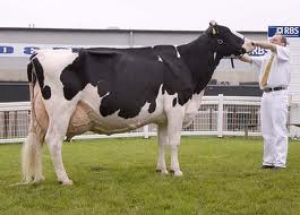Dairy Experts

Most analysts expect that the transition away from the Holstein breed will be very slow and correlated to retiring farmers dividing their farms to the benefit of their children.
Government of Kenya (GOK) statistics indicate that cattle producers own about 14 million indigenous (Zebu) and three million dairy cattle.
More than 650,000 small-scale producers own 80 per cent of the dairy cattle, the most vibrant sector for animal-genetics through artificial insemination.
Small-scale producers depend in large part on rain to water and feed for their dairy cows. Reportedly, Kenyan small-scale dairy producers have begun buying Ayrshire genetics, because the breed generally exhibits strong body structure, foraging adroitness and good milk production even during periods of dryness, and good longevity. These advantages become even more important as small-scale farmers divide their plots into even smaller plots.
Anecdotal evidence seems to reinforce Kenyan dairy industry data indicating that these small-scale farmers produce much of Kenya’s milk. During the raining seasons when fodder becomes readily available, Kenya’s countryside and cities overflow with milk.
Milk prices to small-scale dairy farmers plummet. Farmers give their milk away and even retail outlets reduce consumer milk prices. During these periods, schemes that would increase milk processing or otherwise increase consumption appear and then the dry periods return.
As a result of the above mentioned transition to smaller farms, many local analysts expect slightly declining import prospects for US genetics in the Kenyan market (see table below).
Other prominent suppliers to the market, some of whom have strong Ayrshire genetics, include
South Africa, Canada, and the Netherlands.























